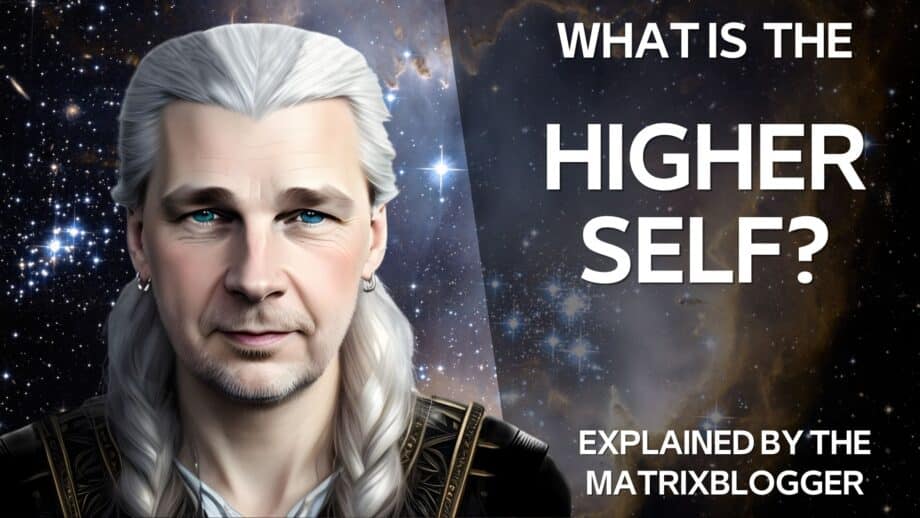For Spiritual Beginners: What is the Higher Self? What is the Inner Self? And what is the wholeness of the self? The classic and modern perspective.
The Higher Self is a concept that appears in many classical spiritual traditions. It describes the deepest essence of our being, which lies beyond the ego and the mind. The Higher Self is directly connected to the Divine and the source of all existence.
Connection to the Higher Self
The connection to the Higher Self can be established through various spiritual practices such as:
- Meditation: Meditation can calm the mind and heighten awareness, making connection to the higher self easier.
- Spiritual Dissociation: The temporary deactivation of the mind to expand consciousness and perceive the holistic self.
- Yoga: Yoga connects the body, mind and soul and can help to release the blockages that prevent connection to the higher self.
- Prayer: Prayer is a form of communication with the divine and can strengthen connection to the higher self.
- Mindfulness: Mindfulness means being present in the here and now and perceiving the world with open eyes and an open heart. Through mindfulness we can better perceive the messages from the higher self.
Characteristics of the Higher Self
The Higher Self, in its classic spiritual perspective, has several characteristics that distinguish it from the ego and the mind.
These properties include:
- Infinite Love and Compassion: The Higher Self is full of love and compassion for all living beings.
- Deep Wisdom and Knowledge: The Higher Self has deep wisdom and knowledge that goes far beyond what the mind can comprehend.
- Peace and Serenity: The Higher Self is free from fear and worry and rests in a deep peace.
- Unity experience: The higher self experiences the unity of all being and feels connected to the divine.
Listening to the Higher Self
The Higher Self communicates with us in various ways, for example through:
- Intuition: Intuition is the voice of the higher self within us. When we listen to our intuition, we can let our higher self guide us.
- Synchronicity: Synchronicity is the occurrence of seemingly random events that actually have a deeper meaning. Synchronicities can give us clues from the Higher Self.
- Dreams: Dreams can give us access to our subconscious and our higher self.
- Signs and Messages: The Higher Self can send us signs and messages through various channels such as nature, music or art.
- In dissociation: Memories of the true self may come into consciousness, drawing clues to the soul’s true home and name.
Living in harmony with the higher self
When we learn to listen to and live in harmony with our Higher Self, we can live a more fulfilling and meaningful life.
This means:
- Finding your own path: The higher self knows what is best for us. When we listen to our higher self, we find our own path in life.
- Make decisions from the heart: The higher self guides us to the right decision. When we decide from the heart, we make decisions that make us happy and fulfilled.
- Trust in Universal Guidance: The Higher Self cares for us. When we have faith that the Higher Self is guiding us, we can let go and surrender to the flow of life.
The Higher Self is a precious part of our being. By connecting with our Higher Self and learning to listen to its guidance, we can live happier, more fulfilling, and more meaningful lives.
Synonyms for the Higher Self
- Higher self
- Inner self
- Origin self
- Original Personality
- Wholeness of self
- Overall personality
- Supraself
- Holistic self
- Total self
- True self
- Authentic self
- Sovereign self
- The All-One Self
- Divine self
- God aspect
- Creator self
More definitions of Higher Self
As described above, the definition of the higher self concerns the classic spiritual variant. However, there are some different considerations on this, such as the mention of the wholeness of the self. It is assumed that each person represents a small part of a holistic self, i.e. is part of an all-encompassing overall personality.
This wholeness of self can be imagined as a cherry tree with all its cherries, which in turn represent the parts of its wholeness. The wholeness of self at some point divided into thousands of parts and scattered them into the many different realities of all possible existence. The challenge here is to collect all these parts again and return to wholeness.
Or imagine the compound eye of a dragonfly. The wholeness of the self looks through all of these facets simultaneously, while the everyday self represents only one facet of this compound eye. The trick is to become aware of all the other eyes in order to be able to see the whole picture.
Hierarchy of Selves
From the considerations of the higher self, it is possible to create a kind of hierarchy that represents the level of consciousness of each existing self within the totality of the self:
- Wholeness of Self (Higher Self)
- The True Self (Dream Self or Left Self)
- Reincarnative Selves (the many incarnations)
- Alternative selves (parallel selves – see multiple world theory)
- The everyday self (the right self)
- Personality aspects (parts of the everyday self)
- Partial self-parts (part for temporary incarnations in animals)
The reintegration of all these selves would then result in the wholeness of the self.
See also:
Jonathan Dilas book “Spiritual Dissociation”
How do you use dissociation as a beginner?


